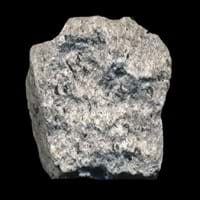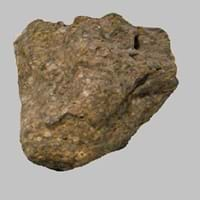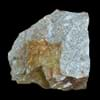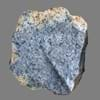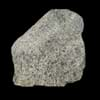Porphyry and Tuff
Definition
Definition
Porphyry is a reddish-brown to purple igneous rock containing large phenocrysts of various minerals embedded in a fine-grained matrix
Tuff is a type of rock made of volcanic ash ejected from a vent during a volcanic eruption
History
Origin
Egypt
Italy
Discoverer
Unknown
Unknown
Etymology
From Old French porfire, from Italian porfiro and in some cases directly from Latin porphyrites
From a Latin word tophous then in Italian tufo and finally tuff
Class
Igneous Rocks
Igneous Rocks
Sub-Class
Durable Rock, Hard Rock
Durable Rock, Medium Hardness Rock
Family
Group
Plutonic
Volcanic
Other Categories
Fine Grained Rock, Opaque Rock
Fine Grained Rock, Opaque Rock
Texture
Texture
Porphyritic
Clastic, Pyroclastic
Color
Black, Brown, Colourless, Green, Grey, Red, Rust, White
Brown, Grey, Yellow
Maintenance
Less
More
Durability
Durable
Durable
Water Resistant
No
Yes
Scratch Resistant
Yes
Yes
Stain Resistant
Yes
No
Wind Resistant
No
No
Acid Resistant
Yes
No
Appearance
Dull
Dull, Vesicular and Foilated
Uses
Architecture
Interior Uses
Decorative Aggregates, Interior Decoration
Decorative Aggregates, Entryways, Flooring, Homes, Interior Decoration
Exterior Uses
Garden Decoration, Paving Stone
As Building Stone, As Facing Stone, Garden Decoration, Office Buildings, Paving Stone
Other Architectural Uses
Curbing
Curbing
Industry
Construction Industry
Construction Aggregate
Building houses or walls, Construction Aggregate
Medical Industry
Not Yet Used
Not Yet Used
Antiquity Uses
Artifacts, Monuments, Sculpture
Artifacts, Monuments, Sculpture, Small Figurines
Other Uses
Commercial Uses
Creating Artwork, Gemstone, Jewelry
Creating Artwork
Types
Types
Rhomb Porphyry
Welded tuff, Rhyolitic tuff, Basaltic tuff, Trachyte tuff, Andesitic tuff and Ignimbrite.
Features
Generally rough to touch, Is one of the oldest rock, Surfaces are often shiny
Always found as volcanic pipes over deep continental crust
Archaeological Significance
Monuments
Used
Used
Famous Monuments
Data Not Available
Easter Island in the Polynesian Triangle, Pacific Ocean
Sculpture
Used
Used
Famous Sculptures
Data Not Available
Data Not Available
Pictographs
Not Used
Used
Petroglyphs
Not Used
Used
Figurines
Used
Used
Fossils
Absent
Absent
Formation
Formation
Porphyry is formed in two stages: the magma cools slowly deep within the crust or the magma is cools rapidly as it erupts from a volcano, creating small grains that are usually invisible to naked eye.
Tuff is formed when large masses of ash and sand which are mixed with hot gases are ejected by a volcano and avalanche rapidly down its slopes.
Composition
Mineral Content
Biotite, Chert, Feldspar, Garnet, Graphite, Quartz, Silica
Calcite, Chlorite
Compound Content
Aluminium Oxide, CaO, Iron(III) Oxide, Potassium Oxide, MgO, Sodium Oxide, Silicon Dioxide, Titanium Dioxide
Hydrogen Sulfide, Sulfur Dioxide
Transformation
Metamorphism
Yes
Yes
Types of Metamorphism
Burial Metamorphism, Cataclastic Metamorphism, Contact Metamorphism, Hydrothermal Metamorphism, Impact Metamorphism, Regional Metamorphism
Burial Metamorphism, Cataclastic Metamorphism, Contact Metamorphism, Hydrothermal Metamorphism, Impact Metamorphism, Regional Metamorphism
Weathering
Yes
Yes
Types of Weathering
Biological Weathering, Chemical Weathering, Not Registered
Biological Weathering, Chemical Weathering, Mechanical Weathering
Erosion
Yes
Yes
Types of Erosion
Chemical Erosion, Coastal Erosion, Glacier Erosion
Chemical Erosion, Coastal Erosion, Glacier Erosion, Sea Erosion, Water Erosion, Wind Erosion
Properties
Physical Properties
Hardness
6-7
4-6
Grain Size
Fine Grained
Fine Grained
Fracture
Irregular
Uneven
Streak
White
White
Porosity
Less Porous
Highly Porous
Luster
Dull
Vitreous to Dull
Compressive Strength
Not Available
243.80 N/mm2
5
Cleavage
Imperfect
Not Available
Toughness
1.7
Not Available
Specific Gravity
2.5-4
2.73
Transparency
Translucent to Opaque
Opaque
Density
2.5-2.52 g/cm3
1-1.8 g/cm3
Thermal Properties
Specific Heat Capacity
Not Available
0.20 kJ/Kg K
25
Resistance
Heat Resistant, Impact Resistant
Heat Resistant, Impact Resistant, Pressure Resistant, Wear Resistant
Reserves
Deposits in Eastern Continents
Asia
China, Kazakhstan, South Korea, Thailand, Turkey, Vietnam
Afghanistan, Armenia, Azerbaijan, Burma, Cambodia, China, India, Indonesia, Iran, Japan, Malaysia, Mongolia, Nepal, North Korea, Pakistan, Saudi Arabia, Syria, Taiwan, Thailand, Turkey, Vietnam, Yemen
Africa
Egypt, Ethiopia, Ghana, South Africa
Cameroon, Cape Verde, Eritrea, Ethiopia, Kenya, Libya, Madagascar, Nigeria, Rwanda, South Africa, Sudan, Uganda
Europe
Finland, France, Germany, Great Britain, Hungary, Iceland, Ireland, Italy, Netherlands, Norway, Romania, Sweden, Switzerland
France, Georgia, Germany, Greece, Iceland, Italy, Netherlands, Poland, Portugal, Spain, United Kingdom
Others
Greenland
Antarctica, Hawaii Islands
Deposits in Western Continents
North America
Canada, Cuba, Jamaica, USA
Canada, Costa Rica, Panama, USA
South America
Bolivia, Brazil, Colombia, Ecuador, Paraguay
Argentina, Bolivia, Brazil, Chile, Ecuador, Paraguay
Deposits in Oceania Continent
Australia
New South Wales, New Zealand, Western Australia
Central Australia, Western Australia
All about Porphyry and Tuff Properties
Know all about Porphyry and Tuff properties here. All properties of rocks are important as they define the type of rock and its application. Porphyry and Tuff belong to Igneous Rocks.Texture of Porphyry is Porphyritic whereas that of Tuff is Clastic, Pyroclastic. Porphyry appears Dull and Tuff appears Dull, Vesicular and Foilated. The luster of Porphyry is dull while that of Tuff is vitreous to dull. Porphyry is available in black, brown, colourless, green, grey, red, rust, white colors whereas Tuff is available in brown, grey, yellow colors. The commercial uses of Porphyry and Tuff are creating artwork, gemstone, jewelry.
|
||
|
||
|
